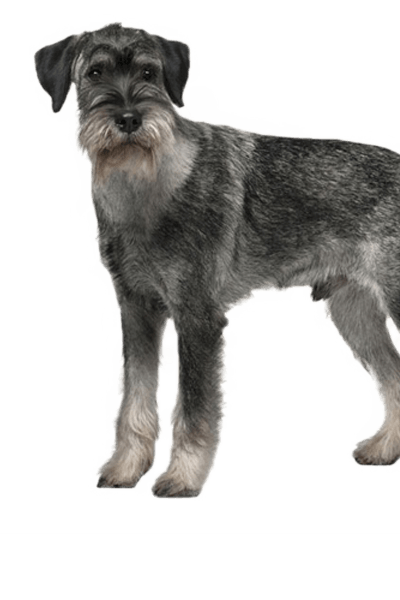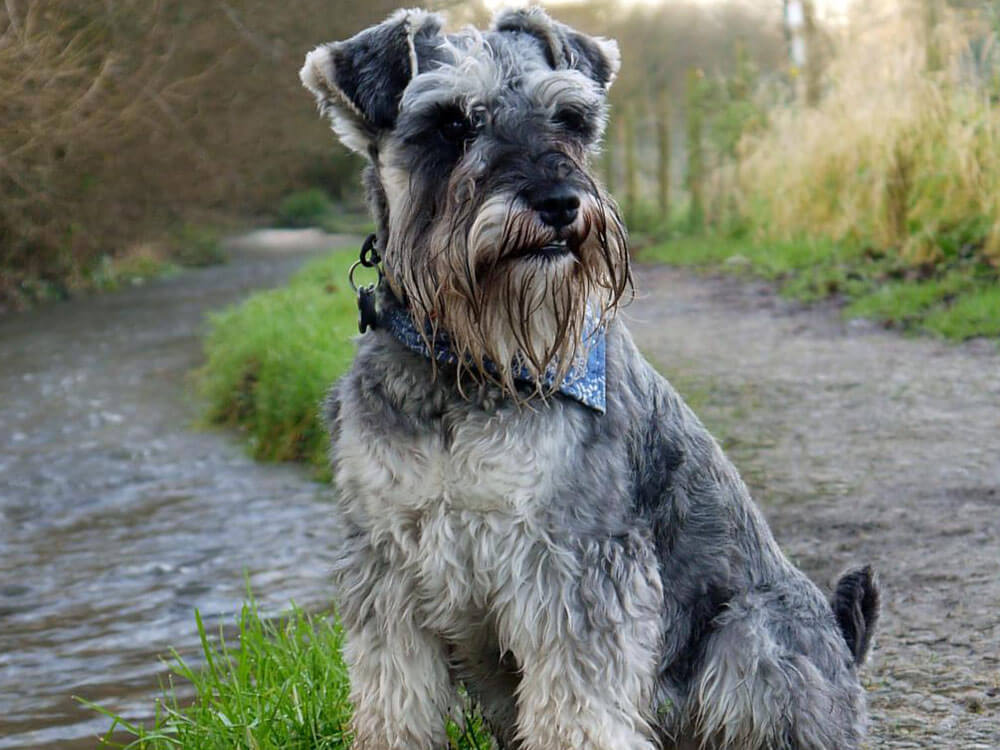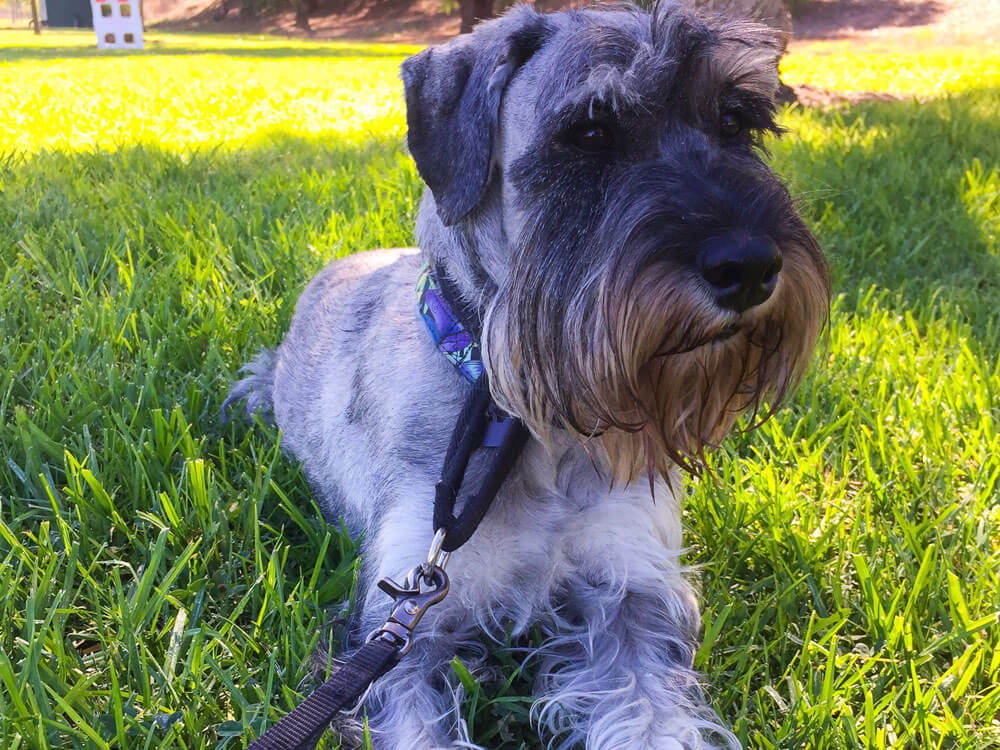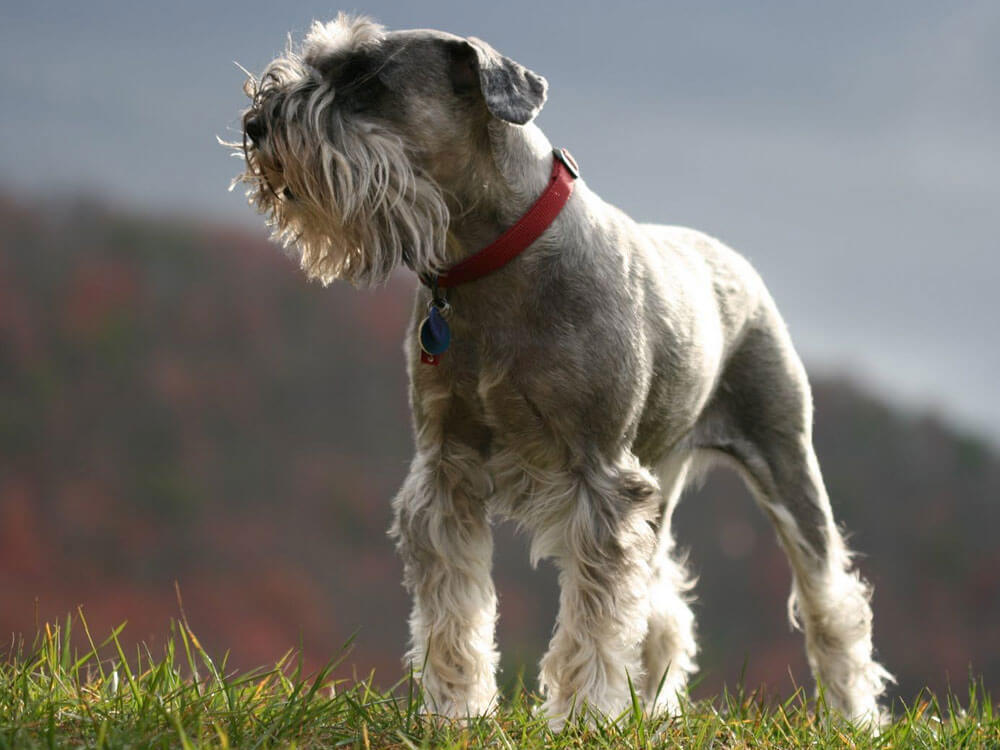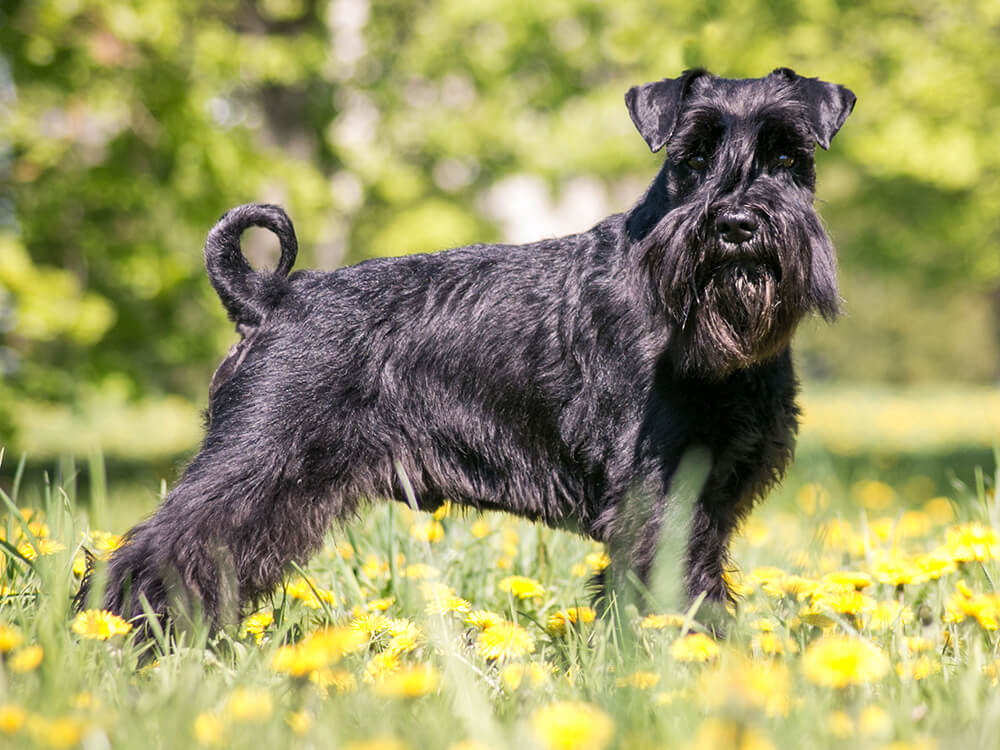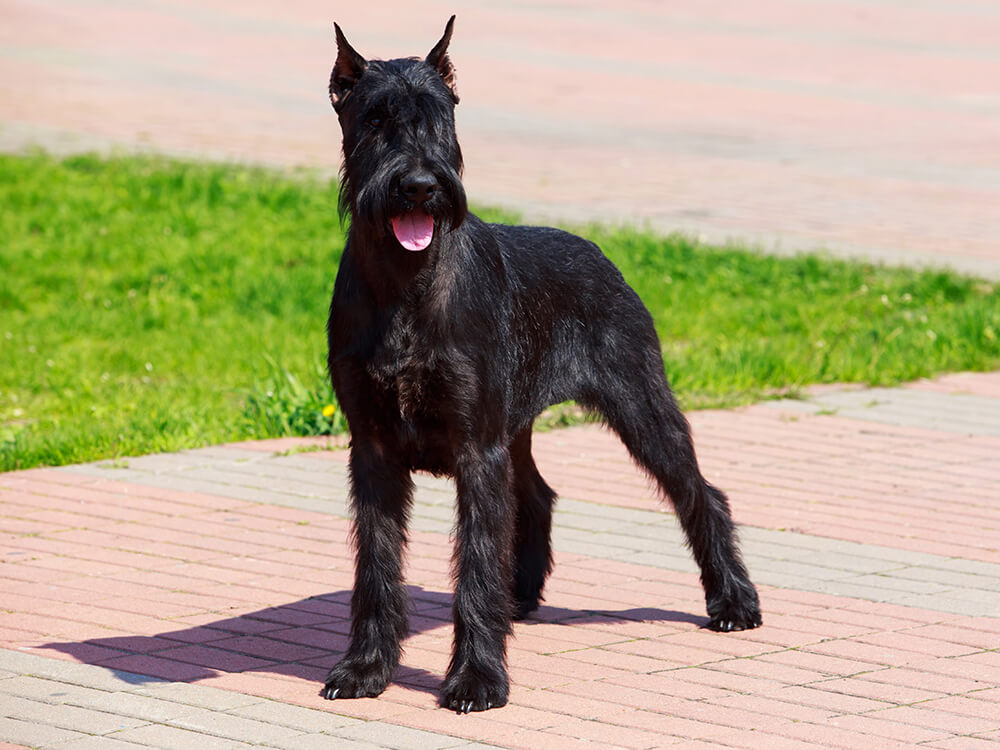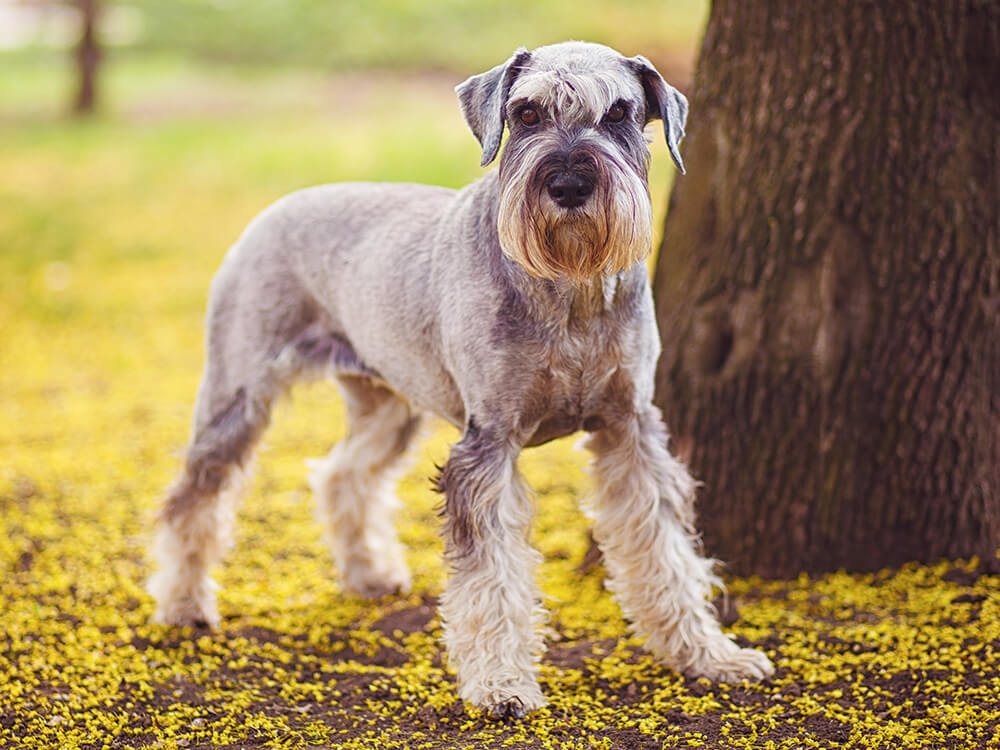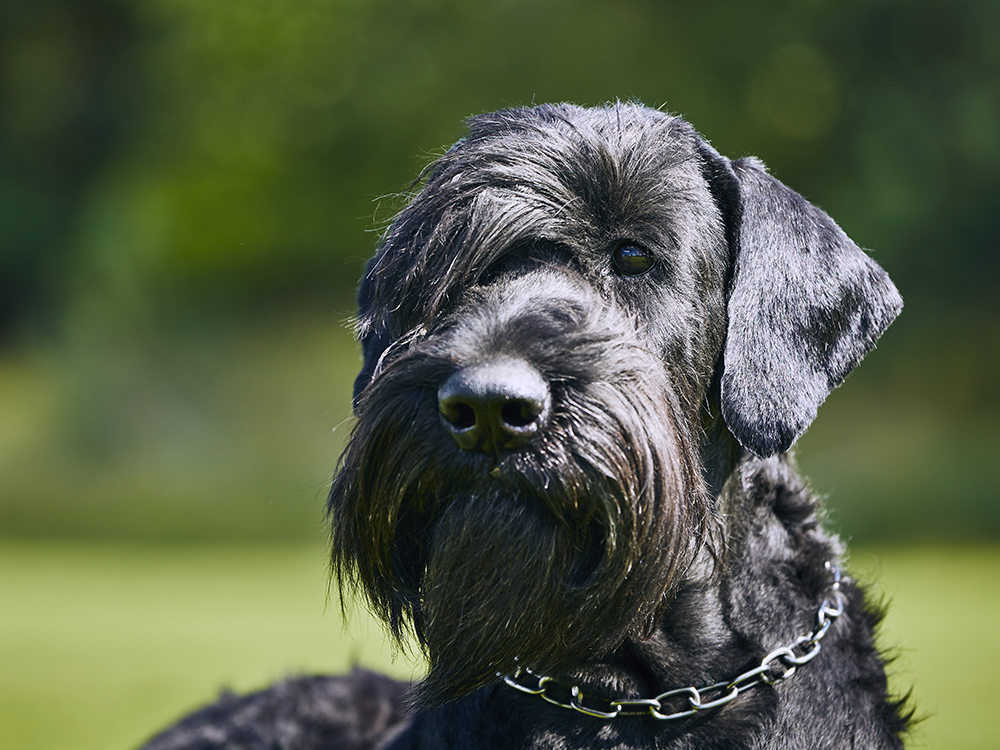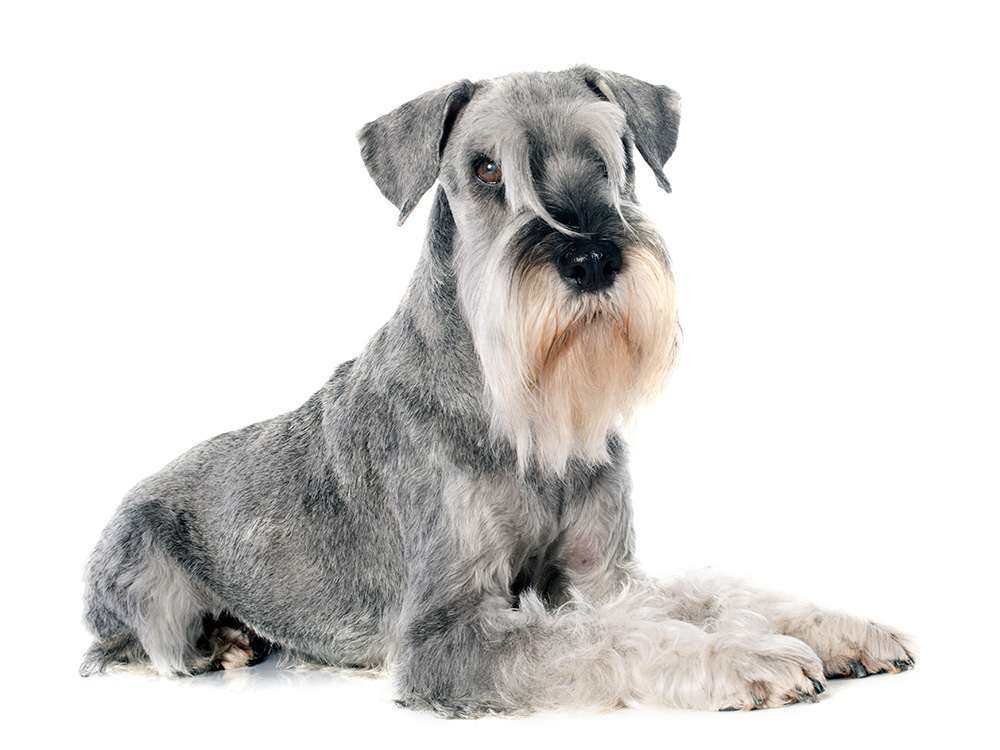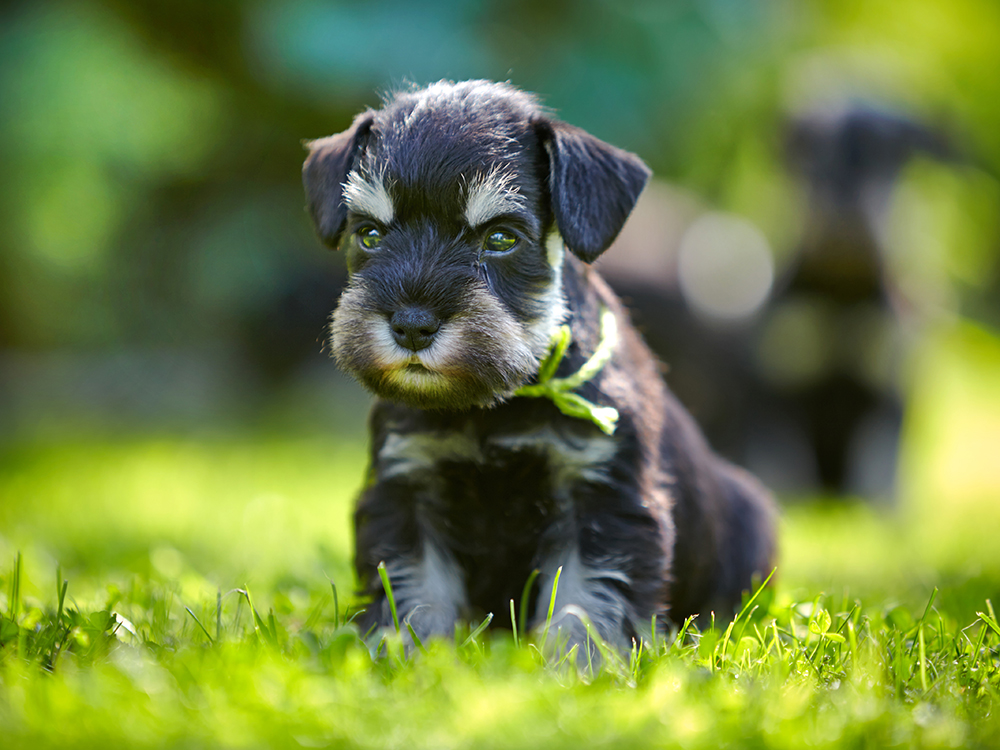
Schnauzer Breed Pictures
Vital Breed Stats
| Height: | 46 - 51 cm M | 43 - 48 cm F |
| Weight: | 14 - 20 kg M | 14 - 18 kg F |
| Breed Group: | Terrier Dog Group |
| Life Expectancy: | 13 - 15 years |
| KC Registered: | No |
Breed Characteristics
| Size: |  |
| Grooming: |  |
| Exercise Level: |  |
| Barking Level: |  |
| Good with Children: |  |
| Good with other pets: |  |
| Affectionate: |  |
| Protective: |  |
| Cost to Keep: |  |
Give a thumbs up if you love the Schnauzer

0
More About the Breed
History
The standard Schnauzer is the oldest of the three schnauzer breeds—the original. The breed originated in Germany during the fifteenth century as depicted in the artwork of Albrecht Durer dating back to 1492. The schnauzer was an all-around dog developed to guard property and livestock and control vermin, like rats. The breed also protects merchants travelling to and from the marketplace.
It is believed that the standard Schnauzer descended from the grey wolfspitz and the black German poodle. The crossing of these two dog breeds resulted into the well-known pepper and salt and black coats we see in the modern schnauzer today. The schnauzer was first shown in the 1870s wherein a breed standard was written. The word schnauzer came from a German word 'schnauze,' meaning muzzle.
In 1907, the Bavarian Schnauzer Club was established in Munich, which helped catapult its popularity. The standard Schnauzer also became widely popular in the United States in the early twentieth century. Today, the schnauzer is amongst the most sought-after dog breeds because of its adorable looks and kind, loving, and loyal nature. The breed is registered with the Kennel Club in the UK.
Appearance
The standard Schnauzer is medium in size, weighing 30–50 pounds and standing 44–50 centimetres at the withers. It is a solid and squarely built dog characterised by the distinctive beard and arched and bushy eyebrows. It has a rectangular head and strong and blunt muzzle. The intense expression in its small, deep-set eyes gives it a grumpy look. The ears, set high on the skull, are either cropped or uncropped (when uncropped, it’s small and V-shaped).
The standard Schnauzer sports a double coat made up of a dense, soft undercoat and a wiry, rough topcoat. The coat comes in colours of pure black or pepper and salt.
Grooming
Grooming-wise, standard Schnauzer breed has a low-maintenance. Most believed its coat is hypoallergenic because it doesn’t shed much, which means it is a good pet for people who suffer from allergies. However, there is no scientific proof backing that claim.
Regular dog grooming is essential, including brushing, bathing, haircut, nail trimming, and ear cleaning. Most owners hire a professional groomer to trim its coat every six to eight weeks. Make sure you choose an excellent groomer expert in both handling and styling, especially if a schnauzer is for the show ring. The rest is basic grooming, such as keeping the ears clean and dry to prevent infection, brushing the teeth for overall oral health, and trimming the nails to avoid painful overgrowth.
Temperament
Intelligence
It is intelligent but a bit stubborn (quick to pick up bad habits), and as such, early socialisation and training are crucial so it knows what is expected of it and where it is placed in the pack. However, the Schnauzer is amenable to training since it is the type of dog that relishes being given a job to do and learning new things.
The standard Schnauzer is great around children because it is gentle and calm. However, any interaction with small children should be well supervised to avoid accidents in case playtime becomes a little boisterous. The Schnauzer gets on well with other dogs and household pets when raised together in the same household. But it will not hesitate to chase off other cats it encounters since it will think that it's fair game. With that said, care should be taken when the Schnauzer is around smaller animals.
Nutrition
- Senior and less active: up to 990 calories daily
- Typical adults: up to 1110 calories daily
- Physically active/working dogs: up to 1235 calories daily
Feeding
Health
Many ailments and health disorders are hereditary, meaning they are associated with the dog’s breed. So if you want to take care of your Schnauzer, you must know the health concerns specific to its breed to determine preventive health measures and hopefully avoid some probable risks.
Consult with a veterinarian if you notice any unusual signs or symptoms. Here are the common issues seen in a standard Schnauzer to give you an idea of what may arise in the future: Hip Dysplasia, Pulmonic Stenosis, Nephroliths, skin allergies, Schnauzer Comedone Syndrome, and Adenoma and Fatty Tumours.
Exercise
Cost of Ownership
It is vital to be aware of basic pet expenses before you buy a standard schnauzer puppy, since the cost to care for this dog breed, or any dog breed for that matter, goes beyond dog food. Put simply, make sure you can afford to provide for its needs over its lifespan. When you purchase a standard Schnauzer, expect to spend £550 to £750, especially from a reputable dog breeder.
Another cost often overlooked is pet insurance. When you avail of pet insurance, it will cover part of the vet expenses in the future. So get affordable pet insurance with good coverage. It usually costs around £23 to £42 a month to insure a three-year old schnauzer, provided the dog does not have any prior medical history. As expected, you will have to spend £30 to £40 for dog food, whilst veterinary care can quickly rise to £900 a year inclusive of veterinary visits, vaccinations, annual boosters, and even neutering or spaying.
Overall, set aside a monthly budget of £60 to £90, depending on the type of insurance you avail for your schnauzer and whether you will want to enrol the dog to an obedience school.
Schnauzer Breed Highlights
- The standard Schnauzer is the original size of the three schnauzer breeds.
- It is a smart, playful, and clownish dog that thrives on human interaction.
- Grooming-wise, it is low-maintenance and often considered hypoallergenic.
- The Schnauzer is a natural watchdog and guard dog because of its protective nature.
- It has an average lifespan of twelve to fourteen years.
